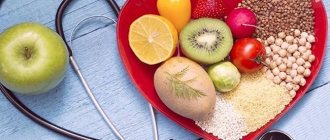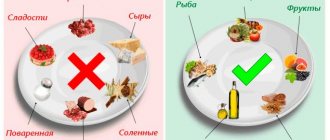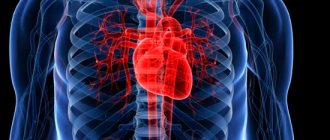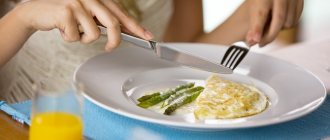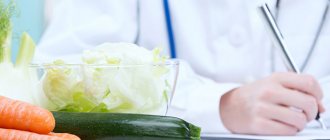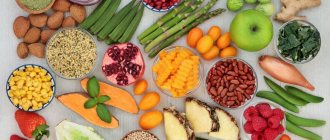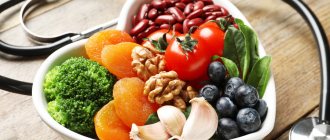Pomegranate juice is a drink made from fresh pomegranate fruits, preserving all the beneficial properties of the berry. This is a natural mix of organic acids, sugars, phytoncides, polyesters, antioxidants, tannin, folacin, amino acids, vitamins A, E, C, PP, mineral compounds (calcium, iron, potassium, sodium, magnesium, phosphorus). In terms of the amount of nutrients, fresh juice has no equal. It is not for nothing that pomegranate juice has acquired the unspoken name among the people “the king of vitamins.” It exhibits antibacterial, antiviral, anti-inflammatory properties, slows down the progression of colon, breast, and prostate cancer.
Interestingly, pomegranate increases sexual desire, due to which it is recognized in eastern countries as a symbol of love and fertility.
Botanical description
Content:
- Botanical description
- Production technology
- Chemical composition
- Beneficial features
- Contraindications and harm
- How to do it yourself
- Pomegranate for weight loss
- Selection criteria and storage
- FAQ
- Conclusion
A pomegranate is the fruit of a small tree of the Derbennikov or Pomegranate family, crowned with original sepals that resemble a crown. The name of the crop comes from the Latin word “granatus”, which means “grainy” and literally describes the structure of the fruit.
The berry is a large ball, with a diameter of 8 to 18 cm, covered with a yellow-orange or dark red peel. Under the shell are hidden small seeds surrounded by a juicy pericarp. A ripe fruit can contain up to 1000 kernels. It is hard to the touch, has a dry peel of a uniform color. It is from such specimens that the juice is squeezed. The taste of the drink is tart due to the presence of tannins and sweet due to the presence of monosaccharides.
The plant reaches 5-6 m in height, loves light, and does not bloom if shaded.
Currently, the crop is grown in the countries of the Middle East, Iran, Iraq, Afghanistan, France, Spain, Portugal, Italy, and in the territory of the former Yugoslavia. This is an extremely healthy fruit, all parts of which (fruit peel, pulp, seeds, bark and flowers of the plant) are used to prepare tinctures, decoctions, and medications for the treatment of conjunctivitis, anemia, burns, diarrhea, stomatitis, heart and genitourinary diseases.
Production technology
To prepare 1 liter of pomegranate juice, you will need 3 kg of ripe, whole, undamaged fruits, which, in turn, are harvested in October-November for 40-45 days. Two technologies for producing the drink are used on an industrial scale. The first assumes that the concentrate is accumulated in 50-ton tanks until the fruit is harvested, after which the juice is bottled. The second method is based on the technique of direct filling of bottles with subsequent shipment to their manufacturer. This option allows you to better preserve the nutritional value of the drink, since if it is stored, the amount of vitamins, macro- and microelements in the product decreases by at least 5% every day.
Production of pomegranate juice:
- Manual sorting of raw materials. At this stage, unripe, spoiled (rotten, damaged) fruits are removed from the conveyor.
- Curing juice using the method of soft pressure of grain on pneumatic membrane presses. This method, unlike the use of auger devices, is more gentle.
During the production process, a closed technological scheme is used, which involves minimal contact of raw materials with air, which eliminates the occurrence of oxidative processes.
- Gentle heat treatment using pasteurizers.
- Storing freshly squeezed juice in disinfected containers with a capacity of 50 cubic meters, made of stainless steel or bottling directly into bottles (depending on the choice of product manufacturing technology).
To increase the shelf life at this stage, food preservatives are introduced into the drink.
Remember, there are several types of pomegranate juice: freshly squeezed, freshly squeezed, aged and reconstituted from concentrate, nectar. Let's look at the difference between them. In the first case, the juice is obtained by directly squeezing the raw materials; in the second, the drink is kept in tanks for a year. During this time, it will be bottled and gradually go on sale in batches. Reconstituted juice is obtained from purified water, natural fruit flavor obtained during the production of concentrate, condensed pomegranate juice. This product is sold under the brand name “fruit juice”.
Nectar, as a rule, is prepared from not very juicy fruits (quince, feijoa, peach, apricot). The fruits are ground into a homogeneous mass, and the resulting puree is mixed with water, sugar, and 25%-50% pomegranate juice.
When choosing a product, you should pay attention to its composition. A good juice is 100% fruit. Sugar can be used as an additional ingredient.
Often nectar contains citric acid, various preservatives, flavors, dyes, and sweeteners.
The best juice is freshly squeezed without additives, the unhealthy juice is reconstituted.
In the selection process, you must give preference to a “cold-pressed” drink. This mark indicates that it was processed at low temperatures, which means it contains valuable nutrients.
To get real juice, pomegranate fruits must be squeezed with your own hands or using a cold-press juicer. High speed centrifugal devices should never be used as they operate at high speeds (10,000 rpm) which causes heating and oxidation of the raw material.
The juice is prepared immediately before consumption, only in this case the body will derive maximum benefit from the “crowned” product.
“It will hurt and it will go away”
“In case of a heart attack, you need to act quickly: if you do not open the lumen of the vessel within 6-12 hours to restore blood flow, necrosis of the myocardium will begin,” says Professor of the Department of Preventive and Emergency Cardiology of the First State Medical University.
Sechenova, chief cardiologist of the Moscow region Maria Glezer. Now there are very strict standards for ambulances: the team must arrive 20 minutes after the call. A network of vascular centers has been created where the patient is helped quickly and efficiently. Fortunately, both the emergence of effective drugs and the development of minimally invasive methods (angioplasty, stenting) make it possible to treat a heart attack much more productively. In most cases, after placement of the stent, the patient is discharged within 2-3 days. And he feels quite healthy.
But for this system to work, the patient must get to the clinic according to the principle “the sooner the better.” At the same time, cardiologists warn: every third heart attack passes without symptoms - pain, nausea, vomiting, dizziness. Or with mild symptoms. Even an ECG does not always show changes. But the patient is often in no hurry to see a cardiologist.
“I ask my patients: why sit at home? - says Maria Glezer. “And they are like children to me: “I thought it would pass, it would resolve.” As a result of such carelessness, every second death from a heart attack happens at home, even before the doctors arrive. At the same time, if the patient is taken to a vascular center, the mortality rate from acute heart attack is reduced by 60%.
Chemical composition
The usefulness of pomegranate concentrate is higher than that of pineapple, orange, and apple. In addition, it is superior to green tea in terms of antioxidants. One fruit contains one third of the daily requirement of ascorbic acid.
100 g of the edible part of the fruit contains 0.2% mineral compounds, 0.2-0.8% fat, 0.3-1.2% tannins, 0.3-5.0% fiber, 0.3-2 .8% organic acids (boric, tartaric, oxalic, citric, malic, succinic), 1.8% proteins, 7-20% carbohydrates (glucose, sucrose, fructose).
Table No. 1 “Chemical composition of pomegranate juice”
| Nutrient name | Nutrient content per 100 g of product, mg |
| Vitamins | |
| Ascorbic acid (C) | 4,0 |
| Niacinic acid (PP) | 0,4 |
| Tocopherol (E) | 0,3 |
| Thiamine (B1) | 0,04 |
| Beta carotene (A) | 0,02 |
| Riboflavin (B2) | 0,01 |
| Macronutrients | |
| Potassium | 102,0 |
| Calcium | 12,0 |
| Phosphorus | 8,0 |
| Magnesium | 5,0 |
| Sodium | 4,0 |
| Microelements | |
| Iron | 1,0 |
Pomegranate juice is useful not only to consume internally, but also to use externally for cosmetic procedures. Masks based on a fresh homemade drink remove toxins from the skin, activate metabolic processes, relieve inflammation, get rid of blackheads, smooth out wrinkles, and tighten the oval of the face. However, before carrying out cosmetic procedures, you should check the allergic orientation of the body (conduct a test).
Beneficial features
Traditional medicine gives pomegranate juice truly miraculous properties. It is believed that it gives strength for a quick recovery. Interestingly, the drink is superior to green tea, cranberries and blueberries in terms of the amount of antioxidants, and lemon juice is superior to lemon juice in terms of citric acid content. Regular consumption of the fruit prevents the risk of developing stomach cancer. The beneficial properties of freshly squeezed juice can hardly be overestimated. It not only cleanses the body of toxins, improves well-being, but also reduces the manifestation of unpleasant symptoms during menstruation and improves mood.
Due to the high concentration of tannins, pomegranate juice should not be drunk in its pure form; it must first be diluted with water in a ratio of 1: 1. You can prepare alcoholic or non-alcoholic fruit and berry cocktails based on the drink. Pregnant and breastfeeding women are recommended to dilute fresh juice at the rate of 1 part concentrate to 3 parts water. At the same time, it is important to monitor the body’s reaction.
Remember, pomegranate juice is an aggressive concentrate that can cause severe intolerance. Therefore, if a mother has an allergic reaction while carrying a baby or during breastfeeding, rest assured, it will definitely manifest itself in the child. In addition, the drink contains citric, malic and oxalic acids, which can cause stomach irritation. Thus, extreme care should be taken when consuming the drink during pregnancy or lactation.
Medicinal properties:
- Improves heart function. When consumed regularly, pomegranate juice cleanses blood vessels of cholesterol deposits and reduces the likelihood of developing atherosclerosis. In addition, it has an anti-atherogenic effect and ensures optimal blood supply to the heart.
- Normalizes blood pressure. Freshly squeezed juice acts as a “natural aspirin” in the human body. The ability of the drink to lower blood pressure is due to the presence of phenolic compounds and antioxidants, which exhibit a mild diuretic effect, thereby reducing blood pressure.
Currently, there is an opinion among the stronger sex that pomegranate juice goes well with alcohol, but this idea is erroneous. Entering the body, cognac first dilates the blood vessels, reducing pressure in the first minutes, then they sharply narrow, which provides the exact opposite effect. To avoid heart overload, these products should not be mixed.
Pomegranate juice should not be consumed if you have low blood pressure, as it can increase the symptoms of hypotension, which will further worsen the person’s condition.
If you have hypertension (high blood pressure), you should not take a concentrated drink; it must first be diluted with water or other berry, fruit or vegetable juice.
To strengthen the walls of blood vessels, lower blood pressure, and improve heart function, you need to drink at least 200 ml of freshly squeezed juice per day.
- Helps the body with diarrhea and dysentery. In case of stool disorder, as a rule, doctors strictly prescribe to exclude fruit juices from the victim’s diet, since they have a laxative effect on the intestines. However, this recommendation does not apply to pomegranate concentrate. On the contrary, it is useful to use both for constipation and diarrhea. The thing is that the juice contains organic acids, which increase the level of necessary digestive enzymes, helping to normalize digestive processes.
Tannins, which give the fruits a tart taste, ensure consolidation of the consistency of stool, and pectin removes toxic substances from the body that accumulate when stool is disrupted.
- Increases sexual activity of men who suffer from erectile dysfunction, improves sperm quality, and helps overcome prostate symptoms. The antioxidant components contained in pomegranate juice increase blood circulation and enhance the effect on smooth muscle tissue. As a result, the active age of men is extended.
- Relieves anemia, starts the process of increasing hemoglobin in the blood due to the presence of easily digestible iron and ascorbic acid in the composition.
- Facilitates the condition of women during pregnancy, breastfeeding, and menstruation. The active components of pomegranate juice help cope with toxicosis, remove excess fluid from the body, relieve swelling, give strength, increase performance, and minimize the likelihood of cramps in the legs.
- Strengthens the immune system, accelerates metabolic processes, and relieves inflammatory processes. Concentrated pomegranate juice has a strong antibacterial and antimicrobial potential, increases the body's barrier functions and its ability to resist infections.
During viral epidemics, as well as during colds, a freshly squeezed fruit drink will protect you from the risk of catching the flu and seasonal runny nose.
- Reduces the risk of cancer. Pomegranate fruits contain 15 amino acids, which makes it the undisputed leader among other fruits in terms of the content of this type of organic compounds. In addition, it contains anthocyanins, isoflavonoids, and antioxidants that improve the functioning of all internal organs and systems.
Pomegranate juice prevents breast cancer and increases the effectiveness of treatment during chemotherapy. The healing properties of the drink are due to the components of the fetus, which in turn block the synthesis of estrogen, which stimulates the appearance of breast tumors.
To prevent cancer, women of all ages are recommended to drink a glass of freshly squeezed pomegranate juice every day.
- Regulates blood sugar levels. The drink cleanses and strengthens blood vessels, maintains stable glucose levels.
Fresh pomegranate juice is beneficial for diabetes.
- Eliminates inflammatory processes in the liver, alleviates the condition after a hangover.
Remember, the “miraculous effect” of a drink depends on its quality. The natural product does not contain flavorings, preservatives or dyes. When choosing pomegranate juice, you should give preference to a freshly squeezed product rather than a bottled one. It’s even better to prepare it at home from high-quality ripe fruits using a juicer or by hand. The only drawback of the resulting natural drink will be slight bitterness. To improve the taste of the juice, drink it with cane sugar or flower honey.
List of recommended products
- Wheat bread baked yesterday (can be dried), inconvenient pastries.
- Lean meats or poultry without fascia or tendons, meat or liver pates, dietary sausages (limited). Low-fat types of fish without skin, boiled or steamed.
- Soft-boiled eggs or as a steam omelet.
- Whole milk (limited), non-acidic types of cottage cheese or cheese, low-fat sour cream.
- Liquid or semi-liquid rice, buckwheat, rolled oats, semolina in water or milk.
- Boiled or steamed potatoes, beets, carrots, green peas, non-acidic varieties of tomatoes, pumpkin. Onions - after boiling.
- Puréed soups or pureed soups from permitted types of cereals and vegetables, seasoned with butter. Soups made with chicken broth are allowed.
- Butter or vegetable oil is limited in dishes.
- Sweet varieties of fruits and berries in the form of jelly, puree, mousse or jelly. Baked apples.
- Weak tea, rosehip infusion, weak cocoa with milk. Freshly squeezed non-acidic juices.
Contraindications and harm
First of all, pomegranate concentrate cannot be consumed in its pure form due to its high content of organic acids. By affecting dentin, it negatively affects the strength of tooth enamel, which can lead to a violation of its integrity and the appearance of caries. It is recommended to drink the drink through a straw and be sure to rinse your mouth with water after drinking. Under no circumstances should you brush your teeth right away, as you may scratch the weakened enamel.
Contraindications:
- peptic ulcer of the duodenum or stomach, gastritis, accompanied by high acidity, heartburn;
- constipation, hemorrhoids;
- allergy;
- pancreatitis.
Remember, concentrated pomegranate juice is irritating to the stomach and esophagus, so it should be mixed with water before drinking. In excessive quantities, the drink is harmful to human health and can cause convulsions, increased blood pressure, dizziness, blurred vision, constipation, colitis, the transition of gastritis or ulcers from chronic to acute.
The safe daily intake of pomegranate juice is 200-400 ml.
Infants and children under one year of age are strictly prohibited from introducing the drink into complementary foods, since pectin compounds, folacin and tannins have a pronounced effect on the baby’s weakened digestive system, which can harm the child, lead to overload and inflammation of the gastrointestinal tract, and the development of an allergic reaction.
List of temporarily excluded products
- Fresh bread, any pastries, pancakes, pies and pies.
- Fatty and stringy varieties of meat, poultry or fish, stewed, fried or smoked. Any types of canned meat or fish.
- Fried or hard-boiled eggs, raw egg whites.
- Any dairy products with high acidity.
- Buckwheat in kernels, millet, barley and pearl barley, whole pasta.
- Radishes, garlic, spinach, mushrooms, turnips. Pickled, pickled, salted vegetables. Canned vegetables and all types of legumes.
- Soups with strong meat, mushroom or vegetable broths. Cabbage soup, okroshka, borscht, beetroot soup.
- Margarine, beef or pork fat, lard, ghee.
- Any spices or herbs, including those used in sauces.
- Fruits or berries of sour varieties and/or raw.
- Chocolate, cream cakes.
- Coffee, strong tea or cocoa, carbonated drinks, sour juices.
How to do it yourself
To avoid purchasing store-bought counterfeits, it is recommended to prepare fruit, vegetable and berry juices yourself. This can be done using a mechanical or electric juicer.
Which method of processing fruits should you prefer and how to do it correctly?
First of all, you should analyze the available material resources, and also determine how much juice will need to be squeezed out regularly.
A manual juicer is a budget option for systematically obtaining no more than 400 ml of concentrate per day. For these purposes, you can use a device model designed for citrus fruits. To obtain juice, pomegranates are cut in half, placed with the flesh down on a cone-shaped peak and, using physical force, the product is slightly twisted in different directions.
Another type of mechanical juicer is a press. In this case, you do not need to scroll the fruit on the cone; you just need to put half the fruit in the bowl and lower the lever, applying force. This method of processing pomegranate allows you to obtain pure juice with a minimum pulp content. However, the procedure cannot be carried out too quickly, otherwise the splashes will scatter in all directions. The fruit can also be squeezed out by hand.
The greater the load on the product, the sooner the juice will flow out. However, this method of processing the fruit causes a lot of trouble and does not allow you to squeeze it out to the maximum.
To make your work easier, it is recommended to give preference to an electric juicer, which will make the process of making juice as fast and comfortable as possible. Unlike mechanical devices, it has a motor with a power of 20 to 100 W. To obtain juice, simply peel the fruit, cut it in half, put it in a bowl, lower the holder, and turn on the machine. In just a couple of minutes the juice will be ready to drink.
Freshly squeezed natural concentrate is slightly bitter, since the partitions are not removed from the fruit during the pressing process. They, in turn, contain the phenolic compound tannin, which gives the drink a bitter taste.
“I feel good - pills in the toilet, and a cigarette in my teeth”
“It is important that patients understand that myocardial infarction is an ongoing process. The disease began long before the vascular accident and, unfortunately, continues after it,” explains Alexey Erlikh, Doctor of Medical Sciences, senior researcher at the Laboratory of Cardiology of the Federal Scientific Center for Physical and Chemical Medicine of the Federal Medical and Biological Agency. — Heart attack is a disease associated with two serious pathological processes: atherosclerosis and thrombosis, when atherosclerotic plaques grow in the vessels and blood clots form on these plaques. And after a heart attack, this process, unfortunately, continues.”
Experts say: there are two powerful effects on the body - non-drug and medicinal. And neither one nor the other can be neglected.
“Non-drug” recommendations are changes in lifestyle:
quit smoking and alcohol;
ensure uniform physical activity, gradually increasing it;
the “gold standard” for both healthy people and “heart attack patients” is 10,000 steps daily or 30 minutes of aerobic exercise;
eat right: complete proteins, limit animal fats and fast carbohydrates; more different vegetables, fruits, herbs, a minimum of sugar, salt, smoked, fried foods. We must try to reduce weight.
Pomegranate for weight loss
During weight loss, the human body is in a state of stress and experiences an increased need for vitamins and mineral compounds. To maintain the balance of nutrients, low-calorie granular pomegranate fruit is introduced into the diet of those losing weight. 100 g of product pulp contains no more than 56 calories, 8-25% seeds, 26-49% peel, 50-75% juice.
The benefits of pomegranate lie in the grains, which help break down fat cells in the body and normalize metabolism.
People with gastrointestinal diseases (especially ulcers, gastritis), individual intolerance to fruit should abandon this weight loss technique. In addition, pomegranate juice strengthens, so if you have constipation, you should avoid using it.
What are the variations of weight adjustment using a fruit drink?
Fasting days
There are two options for the daily diet menu. In the first case, during the fasting day, you should take pomegranate juice (1 liter) every 2.5 hours, diluted with water in a ratio of 1: 1. In the second, 3 additional fruits are added to the “liquid” diet. In this case, the diet menu is structured in such a way as to alternate pomegranate and juice intake. This option is suitable for people who do not tolerate fasting well.
Pomegranate diet
This weight loss method is designed for 10 days. The main feature of the diet is not to drink pomegranate juice on an empty stomach, since in this case it will stimulate the appetite. That is why it is recommended to drink it exclusively between meals three times a day, 200 ml. On the pomegranate diet you can lose up to 4 kg in 10 days. At the same time, it is important to ensure that the caloric content of the daily diet of a person losing weight does not exceed 1500-1700 kcal.
First of all, after waking up, you need to drink a glass of water, after 30 minutes eat half of one pomegranate fruit. The second breakfast consists of boiled buckwheat (150 g). During its preparation, you cannot use butter, sugar, salt and other dressings. For lunch, you are allowed to eat low-fat steamed fish (100 g) in combination with boiled buckwheat (100 g). For afternoon snack – one apple. The dinner is crowned with a salad of greens, cucumbers, tomatoes (100 g) and boiled buckwheat (100 g). At night you should drink 200 ml of kefir 1%. Contrary to popular belief about the fat-burning properties of fermented milk drink, it does not solve the problem of “slow metabolism” at all, but makes it easier to tolerate a low-calorie diet.
Nutritionists do not recommend increasing the duration of the pomegranate diet, since due to the aggressive effect of the fruit juice on the gastric mucosa, you can get gastritis. In addition, it lowers blood pressure, which is dangerous for hypotensive patients.
Slimming mixture
Recipe for preparing a miraculous composition: the pulp of one pomegranate along with the seeds is kneaded in a mortar, 10 ml of olive oil is added and stirred thoroughly. Drink the resulting mixture twice a day before meals. The principle of its action is based on cleansing the body. Once in the digestive tract, it absorbs waste and toxins like a sponge and saturates it with healthy unsaturated omega acids. As a result, those losing weight experience lightness and comfort. In addition, when drinking juice with pulp and seeds, the general condition of the body improves: cellular regeneration processes are accelerated, headaches are reduced, the nervous system is restored, hormonal levels are normalized, cholesterol levels are reduced, excess fat reserves are burned, and bones are strengthened.
Interestingly, pomegranate can be used to make cocktails that stimulate metabolic processes in the body. It is better to prepare fruit and berry and fruit and vegetable juices yourself immediately before consumption and serve in glass glasses. This will eliminate the possibility of oxidation of the vitamin drink. To speed up metabolism, it is recommended to mix pomegranate juice with grapefruit, lemon, apple or carrot juice. They not only help burn fat deposits, but also prevent the development of vitamin deficiency.
Diet after myocardial infarction for men
Men, according to their physiological characteristics, hormonal levels, physical activity and their own habits, are prone to the accumulation of cholesterol. This is also reflected in the fact that women are less susceptible to heart attacks. Therefore, the menu for men, according to the diet after a heart attack and stenting, may look like this:
| In the morning, after sleep | buckwheat porridge with milk, weak tea with lemon, oatmeal cookies |
| Next morning meal | cottage cheese casserole or protein omelette, grated apple and carrot salad |
| Dinner | vegetable broth soup, mashed potatoes with a boiled piece of chicken, vegetable salad with a generous addition of herbs, dressed with olive oil, fruit jelly |
| Afternoon snack | dried apricots, dates, raisins |
| Dinner | boiled rice with baked white fish steak, beet salad, dried fruit compote |
| Three hours before bedtime | low-fat kefir |
Selection criteria and storage
If it is not possible to prepare pomegranate juice, you can buy it in the store, but how can you buy a high-quality, healthy product and not fall for the marketing tricks of the manufacturers? To do this, you need to pay attention to the color, composition, name, price and packaging of the product. As a rule, in these positions the manufacturer indicates important information that notifies the buyer about the authenticity of the product.
Tips on how to choose and distinguish natural juice from fake:
- Package. A high-quality, premium product is always packaged and sold in glass bottles. At the same time, its expiration date must be indicated on the label, and the production date is in the “September-January” range, which corresponds to the pomegranate harvesting season.
- Price. Natural juice cannot be cheap. To obtain 1 liter of pomegranate concentrate you will need 3 kg of fruit. In addition, it is worth considering that the price of the final product consists not only of the cost of raw materials and packaging, but also of the method of its processing and transportation distance.
Remember, in countries where pomegranate juice is grown, it is cheaper than in areas where it is not cultivated.
- Name. The label should only contain the word “juice” (directly pressed) and not “nectar”.
- Manufacturer. The exporter should be the state where the pomegranate grows. It is cultivated in Iran, Spain, Italy, the countries of the Middle East, Portugal, Tajikistan, Uzbekistan, Greece, the Caucasus, Afghanistan, France, southern Dagestan, Azerbaijan, and Armenia.
- Compound. Natural pomegranate juice does not contain preservatives, glucose, dyes, concentrated fruit, vegetable, berry puree or other juice, such as beetroot.
- Color. The natural concentrate has a very rich, red-burgundy color and a pink sediment at the bottom, which completely dissolves when the jar is shaken. The drink is translucent in the sun. Too red or, conversely, a light color indicates that the product has been diluted with water. While a brown tint indicates that the juice is made from rose hips or pomegranate peels.
An open can of canned juice is stored at a temperature of +3...+6 degrees under a tightly closed lid for no more than 24 hours. It is recommended to prepare the drink yourself or buy it from trusted manufacturers.
Which pomegranate juice company is better?
Supplier rating: “YA” (Russia), “NOYAN PREMIUM” (Armenia), “4U” (Azerbaijan). According to test samples, pomegranate juice from these manufacturers does not contain chemical additives, they comply with technical regulations.
Life after CABG
What is coronary artery bypass surgery?
Operation Coronary artery bypass grafting
is an operation that allows you to restore blood flow in the arteries of the heart by bypassing the site of narrowing of the coronary vessel using shunts.
Bypasses increase blood flow to the heart, thereby reducing the frequency of angina attacks and improving cardiac function. The veins of the lower extremities, the sternal artery or the radial artery are used as a bypass graft.
The type of shunt depends on the number and location of narrowed areas of the vessel. A vascular bypass is created as follows: one end of a lower limb vein or an upper limb artery is sutured to the aorta, the other end to a section of the coronary artery located below the narrowed area.
Coronary heart disease (CHD) is caused by a narrowing of the lumen of the coronary vessels, which leads to insufficient oxygen supply to the heart muscle. In such a situation, complaints often arise of pain behind the sternum or in the left half of the chest, the so-called angina pectoris or angina pectoris.
For many, life is divided into “before” and “after” surgery, so the patient thinks: “HOW TO LIVE AFTER THE OPERATION?”
Homecoming
On the day of discharge, plan your activities so that you have time to rest. The emotional excitement of returning home can make you tired, so you will need to get some rest at home. Getting ready may make your chest pain worse. Ask the nurse for pain medication before you leave the hospital.
At home you must adhere to the following rules:
- Get up in the morning at your usual time.
- Swim or shower as needed.
- Always change into different clothes, do not wear night clothes all day. You should think of yourself as a healthy and active person, not as a seriously ill person.
- After periods of activity, after breakfast and lunch, you should lie down and rest. Rest periods after activity are very beneficial, so after taking a walk in the morning, come back and get some sleep.
Walking is very good for you, it will speed up your recovery, in addition to walking, you should not have problems doing housework. You can go to the theatre, restaurant, shop.
In some cases, your doctor may prescribe a more rigorous gradual progression schedule as part of your overall rehabilitation process. Following this program, a few weeks after the operation you will be able to walk 2 - 3 km per day.
When do you go to work?
Patients who performed sedentary work can resume it on average weeks after discharge. Those who are busy with hard work have to wait longer. In some cases, patients will not be able to perform their previous jobs.
What diet should I follow?
Your doctor will explain to you how to eat to reduce your risk of developing heart and vascular diseases. It is very important to reduce the amount of salt and saturated fat you consume. Do not think that after undergoing surgery you will not have any heart problems. If you do not make significant changes to your nutritional diet and lifestyle (quitting smoking, doing recreational exercises), the risk of developing a relapse of the disease will remain very high. You will again have the same problems with the new transplanted veins that you had with your own coronary arteries. You will encounter the same problems that made the first surgery necessary. Don't let this happen again. In addition to strictly following the diet, monitor your weight. Moderation and common sense are the best guides when choosing food and drink.
What medications should I take?
- You should only take medications that your doctor prescribes.
- Do not take the same medications you took before surgery unless prescribed.
- Do not take over-the-counter medications without your doctor's approval.
It is advisable not to lose contact with your doctor after discharge. He is the most informed about your health status and can provide significant assistance with a number of questions. You should call your doctor if you notice signs of infection (redness of the surgical scar, discharge, fever, chills), increased fatigue, shortness of breath, swelling, excess weight gain, changes in heart rate, or any other signs and symptoms that appear You are dangerous.
What if I smoke?
You can't smoke. Over the past decade, convincing material has accumulated indicating the harm caused by smoking to the heart, lungs and other organs. Smoking is the most easily avoidable cause of death.
It should be remembered that smoking can cause death not only from heart disease. But also from cancer. Even the healthiest people are not recommended to smoke. Those at risk of coronary artery disease have even fewer reasons to reach for a cigarette. If you smoke – QUIT!
After discharge and upon arrival home, you may feel weak. Although you may attribute this weakness to heart surgery or heart disease, in reality it is all a matter of weakness in your overused muscles, especially the large ones.
A young man, if he is put to bed for a week, loses approximately 15% of his muscle strength. It is therefore not surprising that an older patient who has been in the hospital for two weeks or more quickly becomes tired and weak when he returns home and tries to resume normal activities.
The best way to restore muscle strength is through exercise. Walking is especially effective after surgery, but be careful not to overdo it.
The main criterion for dosed exercise will be your heart rate; it should not exceed 110 beats per minute during exercise. If for some reason your heart rate exceeds this number, you should change the pace, sit down and give your body a break.
In addition to the purely physical impact, returning home can also affect you psychologically. Patients often complain of depression. These sensations may be caused by emotional release after surgery. Patients sometimes feel that their recovery is going too slowly. They may feel sad and feel like time has stopped. If you feel like you are becoming depressed, it is best to discuss this with your spouse, family, close friends, or doctor.
Questions about sex life
You can resume sexual activity after CABG surgery whenever you want.
But it should be borne in mind that full fusion of the sternum will be achieved in 2.5 - 3.5 months, therefore, during sex, positions that minimize the load on the sternum are preferred (for example, a partner on top).
It is recommended to avoid the following situations:
- being overly tired or agitated;
- have sex after drinking more than 50-100 grams of strong alcoholic drink;
- overeat within 2 hours before the act;
- have an unfamiliar partner.
Stop if you experience chest pain. Some shortness of breath is normal during sexual intercourse.
Attention!
A woman should not plan to have a child until she has fully recovered. Many experts advise waiting at least 1 year. In some cases, after heart surgery, a woman can no longer have children. Talk to your doctor about the implications of surgery for women's health and what type of contraception is right for you. Some contraceptives are not suitable for patients with heart disease.
Driving a car
You will be able to drive a car as soon as your physical condition allows you to do so. It is usually best to wait a few weeks after discharge. But if driving a car is your profession, discuss with your doctor the timing of your recovery period, since in the process of driving a car, the sternum experiences certain loads when turning the steering wheel.
When should I see my doctor again?
How often you visit your doctor after surgery depends on your condition and your doctor's recommendations. Typically, patients are given a date for follow-up consultation upon discharge. When you return home from the clinic, you will need to make an appointment to see your local cardiologist.
Do I need to change my lifestyle?
Typically, coronary artery bypass surgery allows patients to return to a normal lifestyle. The purpose of the operation is to return to work or, if you are already retired, to return to activity and a full life. After surgery, you may want to change something in your lifestyle. It is wise to quit smoking to reduce your risk of having a heart attack. Quit smoking, constantly monitor your blood pressure, monitor your weight, reduce your intake of salt and saturated fats - all this will help you maintain your health for a long time and avoid new problems.
Some doctors recommend that their patients work for a strictly limited time. If you constantly think that you may not have enough time to complete your work, you will constantly find yourself in situations that contribute to stress and increased irritability, which can lead to a heart attack.
Sometimes you can reduce the feeling of time pressure by consciously slowing down the pace of your work or trying not to make a big deal about the problem. If you understand that a particular situation may cause you irritation, try to avoid it or, if possible, allay your fears by discussing the problem with people who are distantly related to it.
What does the future hold for me?
As you recover from surgery. You will be able to fully appreciate its beneficial effects. Increased blood flow in your coronary arteries will mean less pain and less or no angina. You will see that you need less and less medication, and physical activity will tire you less and less. Your overall quality of life will improve!
FAQ
What to do if pomegranate juice has fermented?
In this case, you can make homemade wine from it. To do this, sugar and raisins are added to the fermented juice, and the wort is left for a week. Then vodka is added to the composition, wait another 5 days, filter the drink, and bottle it. In addition, pomegranate makes a delicious tincture.
At what age can you drink juice?
From one year of age, provided there is no allergy to pomegranate. In addition, the drink should not contain pulp or seeds. Juice can be given between meals, but in no case in the morning (instead of breakfast).
Note to young mothers: fresh pomegranate for children is made independently from fresh fruits immediately before use. To do this, just squeeze and strain part of the fruit. The drink is introduced into the baby’s diet with one teaspoon (5 ml). In the absence of an allergic reaction, the dose is gradually increased to 10-15 ml. The juice must be given in diluted form no more than twice a week.
Remember, pomegranate drink should not be given to a newborn baby with a weakened digestive system. It should also be included with caution in the diet of a young mother while breastfeeding. During this period, the baby’s body is most sensitive to milk. If a nursing woman drinks a pomegranate drink and the baby refuses to breastfeed, begins to act up, cry, or develops a rash on his body, you should immediately stop taking it. Most likely, the baby’s body is not yet ready to accept a new product with mother’s milk.
Is it possible to include pomegranate in the menu of diabetics?
Yes, it helps lower blood sugar levels.
Does pomegranate juice weaken or strengthen?
Fastens.
Is it possible to drink pomegranate juice if you have gout?
Yes, but in moderation, not exceeding the daily portion of the drink. It normalizes uric acid and cholesterol levels in the blood.
Pomegranate – benefit or harm in early and late stages of pregnancy?
This is a valuable product recommended for use by the expectant mother throughout the 9 months of bearing the baby. It improves overall well-being, elevates mood, increases performance, helps to cheer up, alleviates toxicosis, eliminates stomach discomfort, and maintains normal hemoglobin levels. Scurvy and anemia are treated with freshly squeezed concentrate.
Is it true that pomegranate juice is prescribed for bleeding?
Contrary to popular belief that fruit thins the blood, on the contrary, it thickens it a little, increasing coagulability. Thanks to this, the drink helps reduce blood loss during childbirth and strengthen gums during pregnancy.
Why do you always want pomegranates?
Most likely, the body needs iron, which increases hemoglobin.
How to remove red stains from pomegranate?
You need to act quickly. To do this, just put dirty clothes in cold water with the addition of soda and leave for 30 minutes. Then rinse the item as usual.
Why does my urine turn red after drinking pomegranate juice?
The fruit contains coloring pigments that give urine a scarlet hue. However, at present there is no consensus on whether this phenomenon is harmless or dangerous. Some believe that there is nothing wrong with this, others argue that the change in urine color is due to the fact that the kidneys are not coping with their function. Therefore, if such a situation arises, it is recommended to undergo tests and diagnose the organs of the excretory system.
How is pomegranate juice used in cooking?
It is used to prepare sweet and sour sauce for main dishes. In addition, you can marinate meat in natural pomegranate juice (to soften the fibers) and bake it in the oven.
Nutrition during and after a heart attack
An example menu could be:
| 1 ration | morning, after sleep | 100g oat milk porridge without sugar, with honey, 150 ml herbal tea |
| 2nd morning meal | pureed apple | |
| dinner | pureed vegetable soup, 50 g steamed fish cutlet, 100 g carrot puree seasoned with sunflower oil, 100 g fruit jelly | |
| afternoon tea | 50g softened low-fat cottage cheese, 100g rosehip decoction | |
| dinner | 100 grams of pureed buckwheat porridge with chicken meatballs, 150 ml of tea with lemon | |
| before bedtime | 100 g prune decoction | |
| 2 diet | After sleep | omelette, without yolks, fruit jelly |
| 2nd morning meal | 150 g cottage cheese with milk, 180 g rosehip decoction | |
| dinner | 250 grams of borscht in vegetable broth, 150 grams of mashed potatoes, 55 grams of boiled veal, 100 grams of fruit jelly | |
| afternoon tea | 100 baked pumpkin or apples | |
| dinner | 100 grams of vegetable stew, 50 grams of boiled low-fat fish, 180 grams of tea with lemon | |
| before bedtime | 180 g low-fat kefir | |
| 3 diet | After sleep | 150 buckwheat porridge with the addition of 10 g butter, tea with milk, 30 g cheese |
| 2nd morning meal | 150 g cottage cheese, dried apricots, raisins, 180 ml dried fruit compote | |
| dinner | 250 grams of vegetable soup with beef meatballs, bread crumbs, 150 grams of beets stewed in sour cream, a piece of boiled chicken, 100 grams of fresh apples | |
| dinner | 150 g mashed potatoes, boiled fish, seaweed salad, tea with milk | |
| before bedtime | 180 g kefir |
Women find it difficult to give up chocolate, cakes and cream pies. It is important to do this and replace confectionery products, buns and baked goods with mousses, puddings, jellies, fruit jelly, and casseroles. Over time, this exchange will become a habit. General recommendations for men and women are:
- adjust weight;
- give up salt;
- avoid preservatives;
- drink liquids in limited quantities.
Healthy food recipes cleanse and strengthen not only the cardiovascular system. They adjust the functioning of the stomach and intestines, and do not provoke the gallbladder and kidneys to form stones. Any exacerbation of other diseases during a heart attack is fraught with life-threatening and health-threatening consequences.
